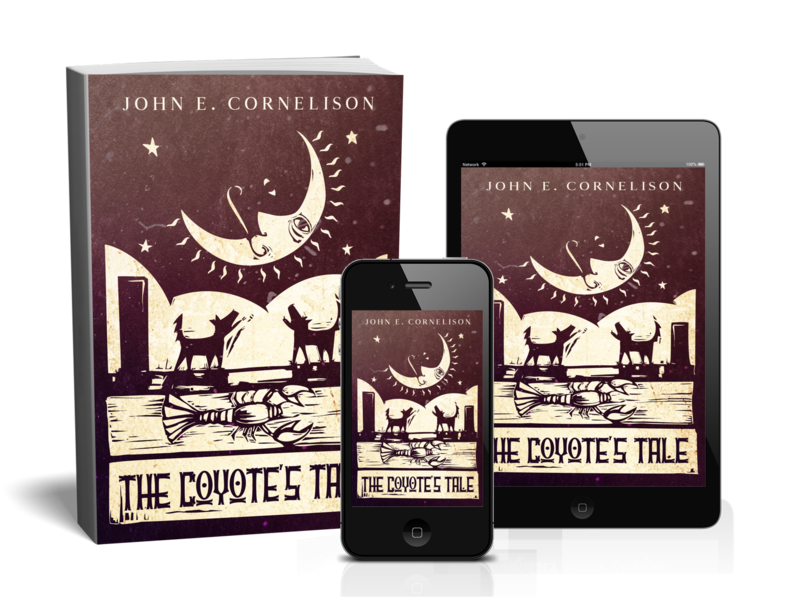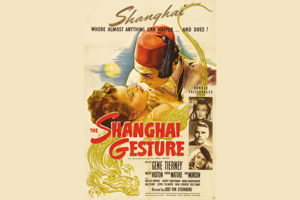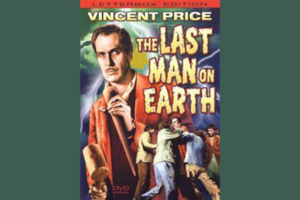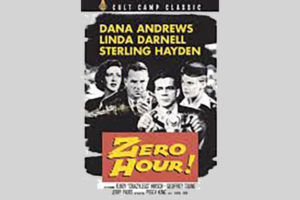
I cannot stand these morons any longer. If you don’t come with me this instant, I shall run amok. – Laura (1944).


Laura (1944): The Noir Masterpiece That Will Keep You Guessing
Imagine falling in love with someone you’ve never met—someone who exists only in a haunting portrait and the stories others tell. A detective is assigned to solve a brutal murder, but as he dives deeper into the case, he becomes obsessed with the victim. The deeper he digs, the more he’s drawn into a web of deception, jealousy, and deadly secrets.
Everyone who knew her had a different version of her—was she a heartless manipulator, an innocent victim, or something else entirely? The case should be straightforward, but nothing is as it seems. Just when you think you have the answers, a shocking twist changes everything.
With stunning cinematography, razor-sharp dialogue, and a mystery that will keep you guessing until the final moments, this Film Noir masterpiece is one of the most stylish and captivating films of its time.
Hello to all of the classic people that are returning. I am glad you are back. I want to welcome any new visitors and let you know that there will be spoilers ahead. Today, on Classic Movie Review, we are taking on Film Noir Laura (1944).
As always, you can subscribe to the show on YouTube by using the tag at symbol @ClassicMovieRev or for audio only on Apple Podcast by searching for Classic Movie Review.
This is a very unusual Film Noir. The story follows a detective as he falls in love with a murdered woman. Director Otto Preminger added some odd homoerotic tension to the story.
This film is rated a good 7.9 on iMDB.com[1]. On Rottentomatoes.com, the film has what I believe is a more accurate rating, with 100 percent on the Tomatometer and a 90 percent audience score[2].
Great film critic Roger Ebert gave this movie four stars[3]. He basically said the film has a lot of holes, but it is so good it doesn’t matter. Cranky old New York Times film critic said in part in an October 12, 1944 review:
“When a murder mystery possessing as much sustained suspense, good acting and caustically brittle dialogue as “Laura,” which opened yesterday at the Roxy, comes along it might seem a little like carping to suggest that it could have been even better. As the story of a strangely fascinating female who insinuates herself into the lives of three very worldly gents, much depends, of course, upon the lady herself.”[4]
Let’s jump right in with the actors.
Actors – Laura (1944)
Returning
Dana Andrews was cast in the role of Det. Lt. Mark McPherson who falls in love with a dead woman. Andrews was first covered in In Harm’s Way (1965). There’s a link below.
Vincent Price played the role of Shelby Carpenter, a southern huckster who was engaged to the murdered woman. Price was first covered in The Last Man on Earth (1964). There’s a link below.
New
Gene Tierney played the role of top advertising executive Laura Hunt. Tierney was born in New York in 1920. Tierney had a wealthy family which resulted in her having a first-rate education, including a finishing school in Switzerland.
Tierney returned to the USA and was performing on Broadway by 1938. Her very first role consisted of carrying a bucket of water on stage, prompting a critic to state, “Miss Tierney is, without a doubt, the most beautiful water carrier I have ever seen!” In 1940, Darryl F. Zanuck saw Tierney in a play, and she was signed to a contract with 20th Century Fox.
Tierney’s first released film was The Return of Frank James (1940), followed by the release of Hudson’s Bay (1941). The next year, she starred in The Shanghai Gesture (1941), which I consider to be one of her best performances. There’s a link below, Sundown (1941), Tobacco Road (1941), and Belle Starr (1941). Next, she was in the comedy Rings on Her Fingers (1942). Directed by Otto Preminger, Laura (1944) is largely considered to be one of Tierney’s best films. Tierney received an Oscar nomination for Leave Her to Heaven (1945). I had a nice talk with Russell Guest from Retro Movie Roundtable. There is a link below. In one of my favorite films, The Razor’s Edge (1946), she plays the spoiled rich girl Isabel Bradley to a tee. There’s a link below. Clifton Webb co-starred with her in this film as well. Tierney was wonderful in The Ghost and Mrs. Muir (1947). I’m a mean old grizzly, and this movie makes me misty.
Big roles such as Night and the City (1950), The Mating Season (1951), Close to My Heart (1951), Plymouth Adventure (1952), Personal Affair (1953), and The Left Hand of God (1955) continued for Tierney through the mid-1950s. A failed marriage, a disabled child, and some disastrous love affairs lead to depression and a hiatus from films. Tierney returned for Advise & Consent (1962) and was as great as ever. However, the demand was gone. Her final feature film was The Pleasure Seekers (1964). Tierney died in 1991, shortly before her 71st birthday.
Clifton Webb played the role of Waldo Lydecker, mentor to Laura and snotty columnist and radio host. Born in 1899, Webb was trained as a youth to act and dance. He left school at 13 to study music and painting. At the age of 19, Webb was a professional ballroom dancer. By his mid-20s, he was on Broadway, on the London stage, and in silent movies.
It took Webb a while to be in talkies because he refused to audition. His first sound film was Laura (1944). He appeared again with Gene Tierney in The Razor’s Edge (1946). There’s a link below. Webb’s portrayal of Elliot Templeton was masterful. However, like in Laura (1944), he may have been playing a character that was close to type.
Staying close to type, he was in a series of Mr. Belvedere movies. A couple of his more interesting roles include Cheaper by the Dozen (1950) with Myrna Loy and Mister Scoutmaster (1953). Webb lived with his mother until she died at the age of 91. He died 6 years later, in 1966, at the age of 76.
Dame Judith Anderson played Socialite and sugar momma Ann Treadwell. Anderson was born in Australia in 1897. She started acting there before moving to New York in 1918. She did well in America and was a top Broadway actress from the 1930s through the 1950s.
Anderson had a strong bearing in her roles. With her strong nose, prominent chin mold, and stern bearing, she seemed the kind of person you would say Yes, ma’am, too. She was made a Dame of the British Empire in 1960.
Anderson’s first movie was the Early Noir/Precode film Blood Money (1933). There’s a link below. She won a best supporting actress Oscar for the Alfred Hitchcock directed Rebecca (1940). A while back, I had a conversation with the author of “Hitchcock’s Blondes,” Laurence Leamer, sometime back. There’s a link below if you are interested.
One of the better films Anderson was in was the great Murder mystery, And Then There Were None (1945). Anderson made her mark on Film Noir with The Red House (1947), The Strange Love of Martha Ivers (1946), there is a link below, Laura (1944), and Why Bother to Knock (1961).
Anderson showed her range with Westerns Pursued (1947) and The Furies (1950), drama with Cat on a Hot Tin Roof (1958), and Biblical Epic The Ten Commandments (1956).
My personal favorite of her films is A Man Called Horse (1970), where she played Buffalo Cow Head in another film version of Sutter’s Run, which was also covered in The Naked Prey (1965). There are links to both below.
After almost a decade and a half away from film, Anderson appeared in Star Trek III: The Search for Spock (1984). This film could arguably be the worst of the original series movies. Anderson played Vulcan High Priestess T’Lar. She was one of only 11 people born in the 19th century to appear in the Star Trek TOS franchise. She oddly decided to appear in a television soap opera after such an amazing career. Anderson appeared in 66 episodes of “Santa Barbara” from 1984 to 1987. This great talent passed in 1992.
Story – Laura (1944)
This movie begins by showing the portrait of Laura (Gene Tierney) hung over the fireplace as the credits roll. When the credits end the voice of Waldo Lydecker (Clifton Webb) reading well-written prose about the death of Laura. Waldo says he was the only one who knew her and was just about to write her story when a New York City police detective, Mark McPherson (Dana Andrews), is shown waiting in the living room of the upscale apartment. The detective looks at a large clock, and the narrator says there is only one other, and it’s in Laura’s apartment.
Waldo calls McPherson into the bathroom, where he is lounging in the tub while he types on his typewriter. Waldo moves the typewriter and exposes himself to McPherson. When Waldo stands up, McPherson gives him a much-debated look. We won’t find the answer here. Waldo is impressed when he finds out that McPherson is a hero and captured a killer.
McPherson asks about a column Waldo wrote that said a person was murdered by a shotgun blast of buckshot, the same manner Laura was killed. When McPherson gets ready to leave, Waldo wants to tag along. Waldo says murder is his favorite crime. McPherson asked if he was in love with Laura. Waldo doesn’t really answer.
The pair travels to the very nice apartment and meet Laura’s very rich socialite aunt, Ann Treadwell (Judith Anderson). Eventually, McPherson asks Ann how she feels about Laura’s fiancé, Shelby Carpenter (Vincent Price). He then asks if Ann is in love with Carpenter. Ann has been giving Carpenter money and spending a lot of social time with him. Waldo makes wisecracks the entire time.
Shelby comes in and makes excuses for being at Ann’s apartment. Waldo says Laura was not definite about marrying Shelby. Waldo, Shelby, and McPherson go to Laura’s apartment to get a key to Laura’s cabin. McPherson breaks Shelby’s alibi and finds out that he planted a key to the cabin in Laura’s drawer. Shelby and Waldo almost get into a fight.
That night, Waldo and McPherson eat out at an Italian restaurant. Waldo takes the tale back five years to his first meeting with the naïve young Laura. He sternly rebuffs her. Later, Waldo finds Laura at her office and apologizes. He then starts mentoring her and helping her meet the right people to make her a star in the advertising field. Waldo picked her hairstyle and the clothes she wore. They eat out every night except Tuesdays and Fridays when they cook at home. After a time, Laura began canceling her regular visits. Waldo stalked her house and found out the man she was seeing was Jacoby, the artist who had drawn the portrait. Waldo destroyed him in his columns and every other man she became interested in.
One night at a party, Laura met Shelby, who is from Kentucky. His redneck charm wins over Laura. Shelby admits he has no money, so she gives him a job at an advertising agency. One of the models that Shelby uses is Diane Redfern. As Laura and Shelby become closer Waldo becomes more jealous. Waldo has Shelby investigated and tries to turn Laura against him. Waldo tells Laura that Shelby is also seeing Diane Redfern. Waldo finally shows Laura a cigarette case that she had given Shelby, which was later pawned by Diane Redfern. When he breaks her down, Waldo says he is doing all of this for her.
Waldo and Laura go to Ann’s apartment and find Shelby dining with Ann. Laura slaps the cigarette case down and storms out. Waldo says on the Friday of the murder, Laura has lunch with Diane Redfern. Laura called Waldo and said she was going to the country to sort things out.
Back on the current timeline, McPherson begins hanging around Laura’s house, reading her letters, diary, and drinking her booze. McPherson calls the liquor supplier and asks if she ever bought Black Pony Scotch. The housekeeper, Bessie Clary (Dorothy Adams), comes in for her interview and gives McPherson the business for messing with Laura’s stuff. Bessie says Laura was a really fine lady. He asks her about the Black Pony. She says she found the full bottle on Saturday before the police came, and the bottle had not been there when Bessie left on Friday. Bessie also washed the glasses.
Around this time, Shelby, Waldo, and Ann show up, and he offers them a drink of the Scotch. Shelby refuses the drink, saying he is not a day drinker. Ann and Waldo begin to talk about the estate, and Waldo tries to reclaim a vase, the matching clock, and a fire screen. McPherson won’t let Waldo take anything, and he sends the three away.
That night, McPherson goes back to Laura’s apartment. He continues to rifle through her stuff, stare at her picture, and search her bedroom. Waldo shows up and starts giving McPherson grief for invading Laura’s stuff. Waldo also reveals that McPherson has put in a bid for the portrait of Laura. Waldo says McPherson may have fallen in love with a corpse.
McPherson falls asleep under the portrait of Laura. The door opens and in walks a very much alive Laura, who demands to know why the man is in her home. He tells her about the murdered girl in her apartment. When Laura changes out of her wet clothes, she finds one of Diane Redfern’s dresses in her closet. McPherson interrogates Laura about her whereabouts and alibis. McPherson finds out that Shelby has a key to her apartment. He also says the murdered woman was wearing Laura’s nightgown and slippers. McPherson orders her not to leave the house or call anyone.
As soon as McPherson is out, Laura calls Shelby. They meet and then split up. McPherson follows Shelby, and the other officer follows MacPherson. Shelby goes to Laura’s cabin and takes the shotgun off the mantle. McPherson catches him in the act. McPherson tells Shelby that he is in trouble because he knows who the murdered woman is. Shelby says he took Laura’s key from the office and took Diane to the house. After three hours, the doorbell rang, and he asked Diane to answer the door. Shelby heard the shot and then ran to Diane and never saw the shooter. Shelby says he was not sure if Laura did it, and he was only trying to keep Laura’s name clean. McPherson also finds out that Laura lied about her radio at the cabin not working.
In the morning, McPherson comes to see Laura with a big ole breakfast cooking. Bessie comes in and freaks out when she sees Laura. They then decide that Bessie should cook for them. Shelby shows up and is happy to see Laura. McPherson starts in on Shelby when Waldo arrives at the door. When he sees Laura, he is visibly shocked and then faints. McPherson decides not to arrest anyone, and Waldo plans a party for Laura.
At the party, Ann starts giving Shelby grief and tries to get him back. Shelby is riding high as he thinks Laura needs him. Oddly, McPherson is at the party. Shelby reveals that he went to the cabin to get the shotgun/murder weapon to protect Laura. Laura goes to the bedroom and talks with Ann. Ann says Shelby is right for her, and McPherson is right for Laura. McPherson gets a call and announces he will bring the killer in that day.
McPherson arrests Laura for the murder. Waldo says he will use his column and his other resources to defend Laura. Shelby is dumbly indignant. McPherson says he wished Shelby had opened the door and gotten shot. Shelby grabs McPherson, who returns a punch to Shelby’s midsection, sending him to the ground, where Ann is ready to pick him up.
McPherson asks Laura about the radio, and she says she hired a handyman when she left the country. McPherson is more concerned with Shelby and Laura’s engagement being back on again. Under interrogation, Laura says she does not love Shelby. He lets her go, saying that she was never arrested and that he just needed to be sure about her.
McPherson goes to Waldo’s apartment and breaks in. He looks at Waldo’s clock and finds out it has a hidden compartment. Back at Laura’s home, Waldo is working on smearing McPherson’s reputation. Waldo says he and Laura will be back together soon.
McPherson goes back to Laura’s apartment. Laura sends Waldo away, and he says he will be discussing great lovers on his show in 15 minutes. McPherson goes to the clock and finds the murder weapon in the secret compartment. McPherson tells Laura that Waldo was the killer and hid the gun after Shelby fled the apartment.
Waldo is hiding in the hallway of the apartment the same way he did the night he murdered Diane. When McPherson leaves to arrest Waldo, Waldo comes back to the apartment to kill Laura, saying that if he can’t have her, no one will.
At the stoop, McPherson finds out from the police sergeant that Waldo never left the building. The police bust in as Waldo attempts to shoot Laura. One of the police sergeant’s guns Waldo down. Waldo’s last words are Goodbye, Laura. Goodbye, my love.
Conclusion – Laura (1944)
Few films capture the essence of classic Hollywood glamour and intrigue as effortlessly as Laura (1944). Otto Preminger’s direction, coupled with the cinematography of Joseph LaShelle, changed what could have been a standard murder mystery into something far more enigmatic and seductive. The film operates on many levels—not just as a whodunit, it’s a think piece on obsession, perception, and the sham nature of identity.
At its heart, Laura is about the way people construct their own versions of reality, particularly when it comes to love and desire. Each of the key players—Waldo Lydecker, Mark McPherson, and Shelby Carpenter—views Laura Hunt through a different lens, shaping her into an idealized vision rather than seeing her as she truly is. Even the audience is drawn into this web of illusion as we first come to know Laura through a portrait and the memories of those who claim to have known her best. When she unexpectedly steps back into the story, it’s as if she has emerged from a dream, challenging everything we thought we understood about her.
Gene Tierney’s performance as Laura was amazing, perfectly capturing the character’s allure. Dana Andrews, as the jaded detective who finds himself falling for a woman, he believes to be dead, gives a performance that is understated yet deeply compelling. And then there is Clifton Webb as Waldo Lydecker, whose acerbic wit and possessive devotion to Laura make him one of noir’s most fascinating villains. His performance alone elevates the film, turning it into something vastly superior to a typical crime story.
The film’s themes of longing and unattainability resonate across generations, making it feel just as relevant and captivating today as it did in 1944. Unlike many noirs, which plunge their characters into inescapable doom, Laura offers a sense of redemption—albeit one that comes at a cost. It leaves us with the lingering question of whether anyone, even Laura herself, truly knows who she is beneath the projections of those around her.
Mrs. Classic Movie Review usually watches all of the movies with me. While I was reading New York Times reviews from 1944 and more recent Roger Ebert reviews, she casually stood up at the end and said, “You know that movie is just a remake of Phantom of the Opera. Damn! Missed that.
You can also go to classicmovierev.com to read notes, bios, and other random movie thoughts.
World-Famous Short Summary – Don’t judge McPherson for falling in love with a picture. You’ve fallen in love with a character from a movie.
Beware the moors
[1] https://www.imdb.com/title/tt0037008/
[3] Laura movie review & film summary (1944) | Roger Ebert
[4] https://www.nytimes.com/1944/10/12/archives/at-the-roxy.html










Leave a Reply
Your email is safe with us.